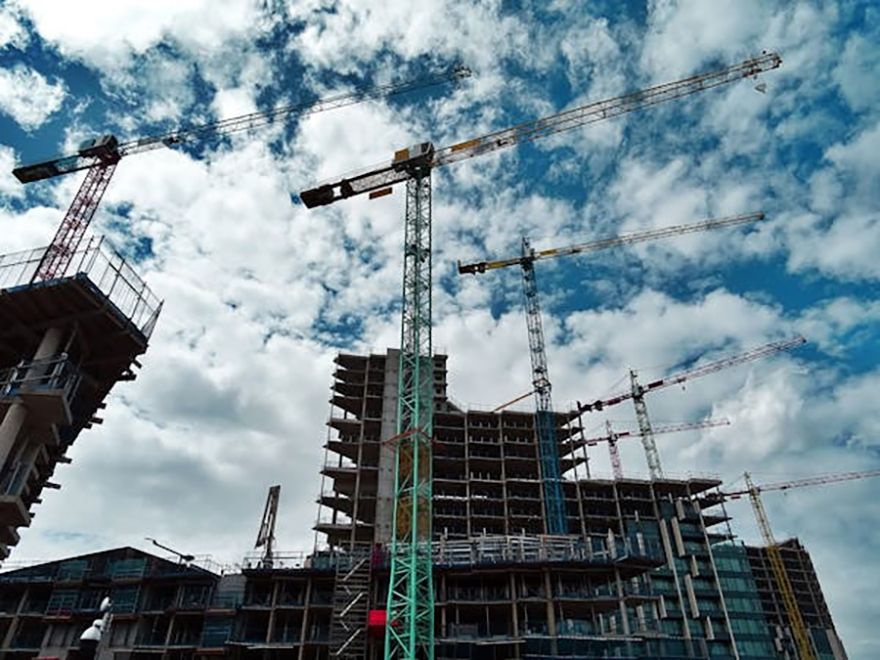
LOLER (lifting operations and lifting equipment regulations) is one of the most critical safety legislations for the construction industry in the UK. It ensures that lifting equipment, including cranes, hoists, and other machinery, is used safely and maintained to prevent accidents. Given the heavy reliance on lifting equipment in construction, compliance with LOLER is not just a legal necessity but also an essential measure for protecting workers, preventing equipment failures, and ensuring smooth project operations.
The
Health and Safety Executive (HSE) enforces LOLER regulations, requiring businesses to thoroughly inspect, maintain, and certify their lifting equipment regularly. For construction firms, this means working closely with manufacturers, suppliers, and service providers who understand LOLER compliance and can provide certified lifting solutions.
What Does LOLER Cover?LOLER applies to all lifting operations where equipment is used to lift or lower loads, whether manually operated or powered machinery. The regulation covers:
Suitability of equipment – all lifting equipment must be fit for purpose and strong enough for its intended use;
Safe installation and positioning – cranes and hoists must be installed securely to prevent movement or tipping;
thorough examination and inspection – equipment must undergo routine checks by a competent person to identify potential hazards;
Marking of lifting equipment – all machinery must have clear markings indicating safe working loads (SWL) and other essential operational data;
Safe use of equipment – operators must be trained in handling lifting equipment safely and be aware of all relevant safety protocols.
For construction sites, ensuring compliance with LOLER is particularly crucial due to the high-risk nature of the work. Heavy materials, dangerous environments, and the potential for human error make rigorous adherence to LOLER a priority.
The role of gantry cranes in LOLER complianceGantry cranes play a significant role in lifting operations on construction sites, especially for handling heavy loads such as steel beams, prefabricated structures, and machinery components. These cranes must adhere to LOLER regulations to ensure safe and efficient lifting operations. One of the most critical aspects of compliance is regular thorough examinations.
According to LOLER, all lifting equipment must be inspected: before its first use; at least once every 12 months for general lifting equipment; every six months for equipment used for lifting people; after any significant alterations or repairs; gantry cranes, whether fixed or mobile, must undergo these inspections to detect wear and tear, corrosion, misalignment, or any potential faults that could lead to dangerous failures. A failure to comply with LOLER could lead to severe penalties, site shutdowns, or, worse, workplace injuries.
How construction firms can ensure complianceTo remain compliant with LOLER, construction firms should take the following steps:
Work with LOLER-Compliant Equipment Manufacturers — Choosing a reputable supplier that understands and adheres to LOLER regulations is crucial. Investing in cranes and lifting equipment that meet safety standards reduces risks and ensures seamless compliance.
Schedule regular thorough examinations — Construction site managers should have a schedule for LOLER inspections, ensuring all lifting equipment undergoes the necessary checks at the required intervals. Inspections must be carried out by a ‘competent person’ – someone with the relevant knowledge, experience, and training to identify potential hazards.
Maintain proper documentation – Keeping records of all lifting equipment examinations, risk assessments, and maintenance logs is essential. This documentation serves as proof of compliance in case of an HSE inspection.
Train Operators and site workers — LOLER compliance is not just about the equipment—it’s also about the people using it. Proper training on safe lifting techniques, load assessments, and equipment operation is essential in preventing accidents and ensuring compliance.
Use the right equipment for the right job — Misusing lifting equipment is a common cause of accidents. Ensuring that gantry cranes and other lifting machinery are suited for the specific tasks they’re performing will improve safety and efficiency on site.
A manufacturer’s perspective on LOLER complianceEnsuring that lifting equipment meets LOLER standards requires a commitment to safety, precision engineering, and ongoing compliance checks. Lloyds Beal, a leading manufacturer of gantry cranes, understands the importance of LOLER compliance in construction operations.
Joel Cousins, director of Lloyds Beal, said: “At Lloyds Beal, we design and manufacture gantry cranes that adhere to the highest industry standards, ensuring full compliance with LOLER regulations. Our equipment undergoes rigorous testing and quality checks before it reaches our customers, providing peace of mind that their lifting operations are both safe and efficient.”
By working with LOLER-compliant manufacturers, construction companies can ensure that their lifting solutions not only meet safety regulations but also enhance productivity on-site.
In summaryLOLER compliance is a critical aspect of construction site safety, ensuring that lifting equipment is fit for purpose, regularly inspected, and operated correctly. For businesses in the construction industry, partnering with trusted manufacturers like
Lloyds Beal for reliable and compliant gantry cranes is an effective way to meet LOLER requirements while improving operational efficiency.
Ignoring LOLER compliance can result in severe consequences, from legal penalties to site shutdowns and workplace injuries. By taking the necessary steps—choosing the right equipment, maintaining inspection schedules, training staff, and keeping thorough records—construction firms can safeguard their workers and ensure smooth, incident-free lifting operations.